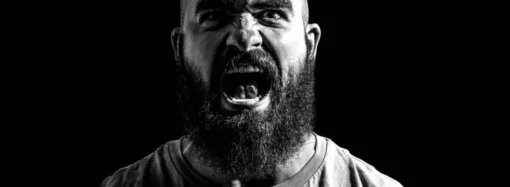My sixth-grade visit to the Pavek Museum of broadcasting was the most memorable field trip of elementary school. The live radio broadcast my fellow students and I produced while there was probably why.
As part of the broadcast, several students were instructed to write a news bulletin. The gist of it? The governor of Minnesota had decreed that schools would close and everyone would be homeschooled the following week. Parents who couldn’t manage it on their own could send their kids to the governor’s mansion for help.
Remembering their creative energies always makes me chuckle. Little did I know that their fake news bulletin was almost prophetic, and that in the age of COVID-19, the students of not only Minnesota, but the entire globe would be required to start homeschooling!
It’s been interesting to watch the outcome of those makeshift homeschool efforts. I laughed when I came across the following journal entry of one young student, which was shared by his mother on Facebook:

Happily, his mother had the good sense to laugh about the situation and reassure people that things are looking up in their home school experiment.
The transition has been more difficult for other mothers, however, as the following video from an Israeli mom demonstrates:
The poor woman is overwhelmed trying to keep up with teachers’ demands, schedules, and online programs, proclaiming, “If we don’t die of Corona, we’ll die of Distance Learning!”
Her desperation raises two important points. The first? Hats off to homeschool moms! The world is waking up and realizing just how much effort it takes to play both mom and teacher to students of various ages. Keep going, you’re doing great!
But the second point is more subtle and hints at the philosophical difference between the frantic homeschooling of COVID-19 and the homeschooling done routinely by thousands of families. You see, ordinary homeschoolers know how to think outside the box. It’s what keeps them sane.
Homeschools are not run like traditional schools with regimented grades, class periods, and a mountain of busywork to occupy students’ time. Mothers learn from experience which subjects are conducive to group learning and which come with the added benefit of allowing younger students to work with more advanced material. (It won’t kill them – they soak it up better than the older ones!) At the same time, students learn to be independent learners, working on their own, not needing to be spoon-fed minute-by-minute schedules from a teacher.
This is in sharp contrast to the poor woman in the video above. She has four children, each with different classes and teachers. The teachers, rightly wanting to do their jobs well and make sure children don’t fall behind during this time, are continually hovering, frantically wondering if parents can handle the system they have been handed.
The problem is, parents can’t. That’s not a slam on parents. It’s simply a reflection of a broken education system that needs to be reevaluated.
John Taylor Gatto, a former New York teacher of the year, framed this problem in the following way:
“It is the great triumph of compulsory government monopoly mass schooling that among even the best of my fellow teachers, and among even the best of my students’ parents, only a small number can imagine a different way to do things. ‘The kids have to know how to read and write, don’t they?’ ‘They have to know how to add and subtract, don’t they?’ ‘They have to learn to follow orders if they ever expect to keep a job.’”
This wasn’t always the case in America, Gatto asserts:
“Only a few lifetimes ago things were very different in the United States. Originality and variety were common currency; our freedom from regimentation made us the miracle of the world; social-class boundaries were relatively easy to cross; our citizenry was marvelously confident, inventive, and able to do much for themselves independently, and to think for themselves. We were something special, we Americans, all by ourselves, without government sticking its nose into and measuring every aspect of our lives, without institutions and social agencies telling us how to think and feel. We were something special, as individuals, as Americans.”
Miracle of miracles, people survived back then. In fact, Gatto suggests they were able to thrive and soar to levels we only dream of for today’s children.
Which brings us to the present. This time of uncertainty is a great advertisement for the flexibility and viability of homeschooling. Parents can teach their children. What we need to realize, however, is that their makeshift homeschools might not look exactly like the traditional classroom and learning environments teachers are hoping for.
If they don’t, that’s just fine. Every day is a school day, and the sooner we recognize this, the sooner we will free ourselves, our teachers, and especially our students to thrive as individuals eager to learn and grow, no longer stifled by outdated, industrialized education systems.
—
[Image Credit: Pexels]
















Leave a Comment
Your email address will not be published. Required fields are marked with *